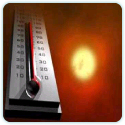Best Ways to Beat the Heat
Dangerous Activity
Exercising or working outdoors on a sunny summer day is great for your health, but it can also be dangerous if you’re not careful. Heat-related illness can be fast-acting and deadly. Learn about the following problems and what you can do to prevent them:
Dehydration
You can become dehydrated when your body loses too much water through diarrhea, vomiting, or sweating. When you’re not drinking enough fluids, your body’s cells absorb fluid from the blood and other body tissues. Your muscles begin to get tired and you may have cramps or feel faint. By the time you are severely dehydrated, there’s no longer enough fluid in the body to get blood to the organs, so you may start to go into shock.
Early signs of dehydration include increased thirst; dry mouth; reduced urine output, with dark yellow urine. Symptoms of moderate dehydration include extreme thirst; dry appearance inside the mouth; decreased urination, or half the normal number of urinations in 24 hours (usually 3 or fewer urinations); lightheadedness that is relieved by lying down.
Severe dehydration is life-threatening. Symptoms that require emergency care include altered behavior, such as severe anxiety, confusion, or not being able to stay awake; faintness that is not relieved by lying down, or lightheadedness that continues after standing for 2 minutes; weak, rapid pulse; cold, clammy skin or hot, dry skin; loss of consciousness.
Heat Exhaustion
Heat exhaustion occurs when you cannot sweat enough to cool your body. It generally develops when you are working or exercising in hot weather. Symptoms of heat exhaustion include fatigue; weakness; headache; dizziness, or nausea; and skin that is cool, moist, pale, or flushed. Mild cases of heat exhaustion can be treated at home with plenty of rest, water and a cool environment. More severely exhausted patients may need IV fluids, especially if vomiting keeps them from drinking enough.
Heatstroke
Heat exhaustion can sometimes lead to heatstroke, which requires emergency treatment. Heatstroke occurs when the body fails to regulate its own temperature and body temperature continues to rise, often to 105°F (40.56°C) or higher.
A person with heatstroke may stop sweating. Other symptoms of heatstroke include confusion or unconsciousness, and skin that is red, hot and dry, even under the armpits. Classic heatstroke can develop without exertion when you are exposed to a hot environment and your body cannot cool itself effectively.
This type of heatstroke may develop over several days. Babies and older adults are most at risk. Exertional heatstroke may develop when you are working or exercising in an extremely hot environment. A person suffering from exertional heatstroke may sweat profusely, but the body still produces more heat than it can lose.
This causes the body’s temperature to rise to high levels. Both types of heatstroke lead to severe dehydration and can cause body organs to stop functioning, so if you notice any symptoms, you should seek emergency medical treatment immediately.
Preventing Heat-Related Illnesses
Common sense is the key to avoiding heat-related illnesses. Just follow these simple precautions:
Stay hydrated. The easiest way to avoid heat disorders is to keep your body well hydrated. This means drinking plenty of water before, during and after exercise or exposure to heat and humidity. If you’re sweating heavily, you can drink a sports drink (like Gatorade) to replace lost salt (sodium) and other minerals (electrolytes).
Check your ventilation. Sitting in a shaded, open area will help your body cool through sweating. If you’re indoors, you should open windows, use a fan or turn on the air conditioning during excessively hot days.
Choose clothing carefully. Light-colored, loose-fitting clothing will help your body breathe and cool itself down naturally. Tight clothing restricts that process and dark colors absorb the sun’s light and heat.
Limit yourself. Don’t overdo your activity on hot days. Heatstroke can develop in less than an hour. If you feel yourself getting warm or lightheaded, it’s best to take a time-out and rest in the shade.
